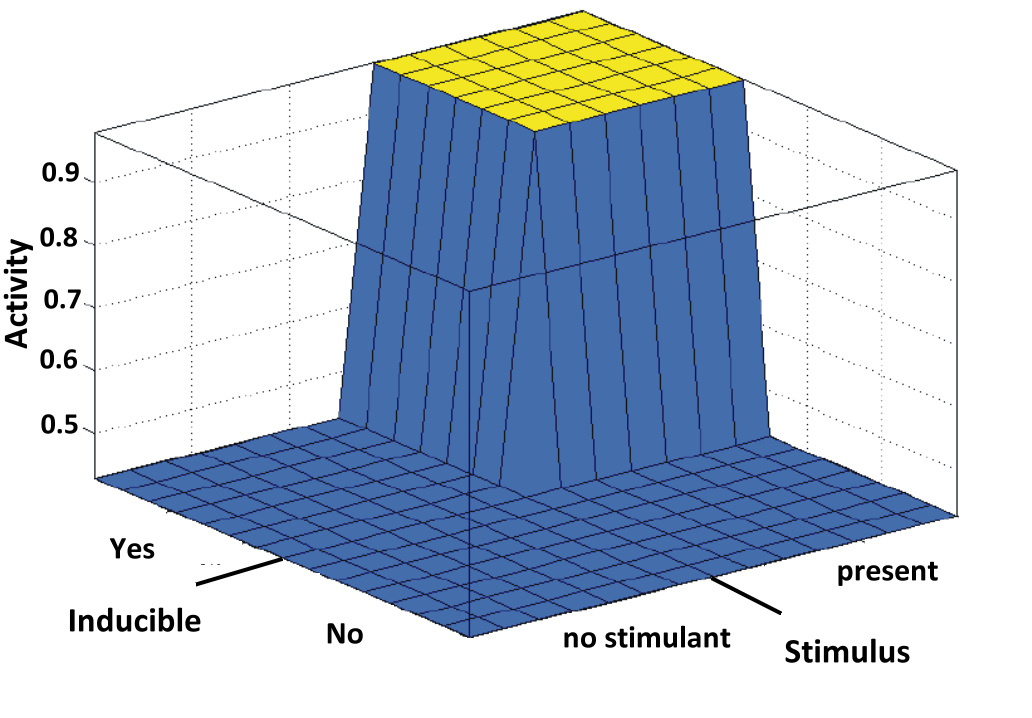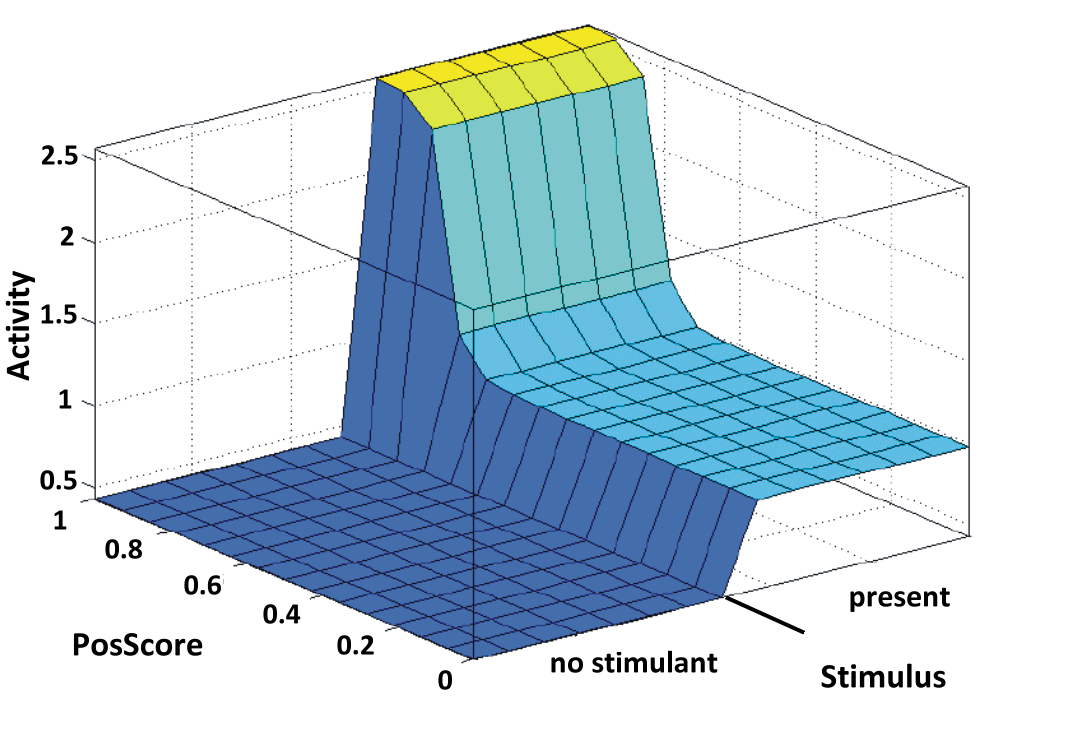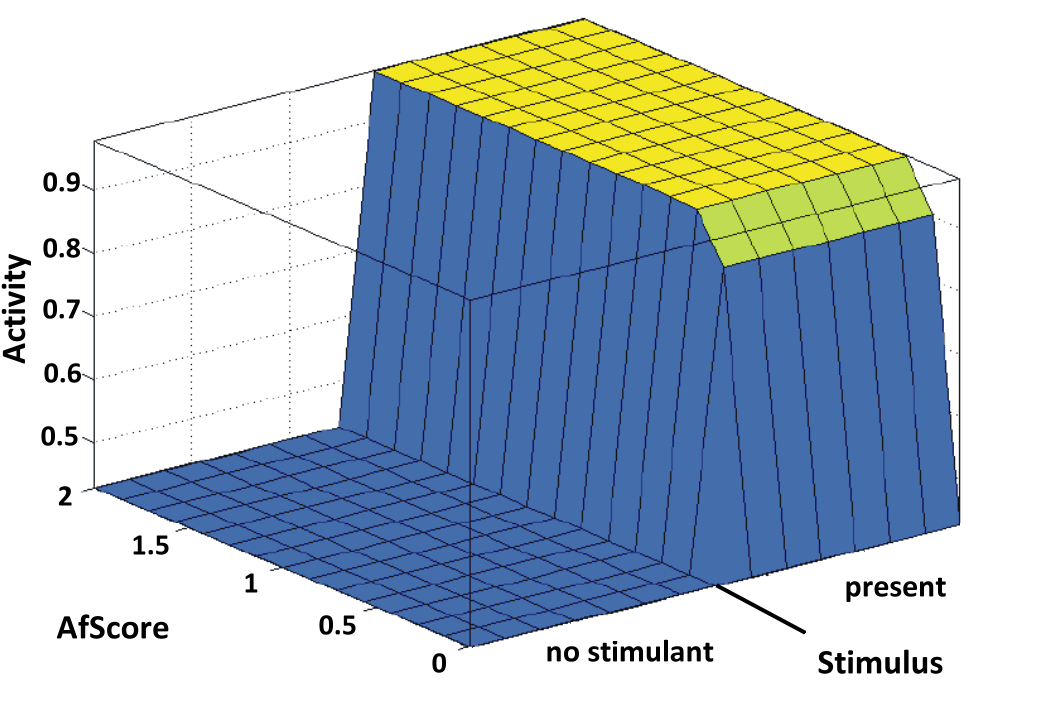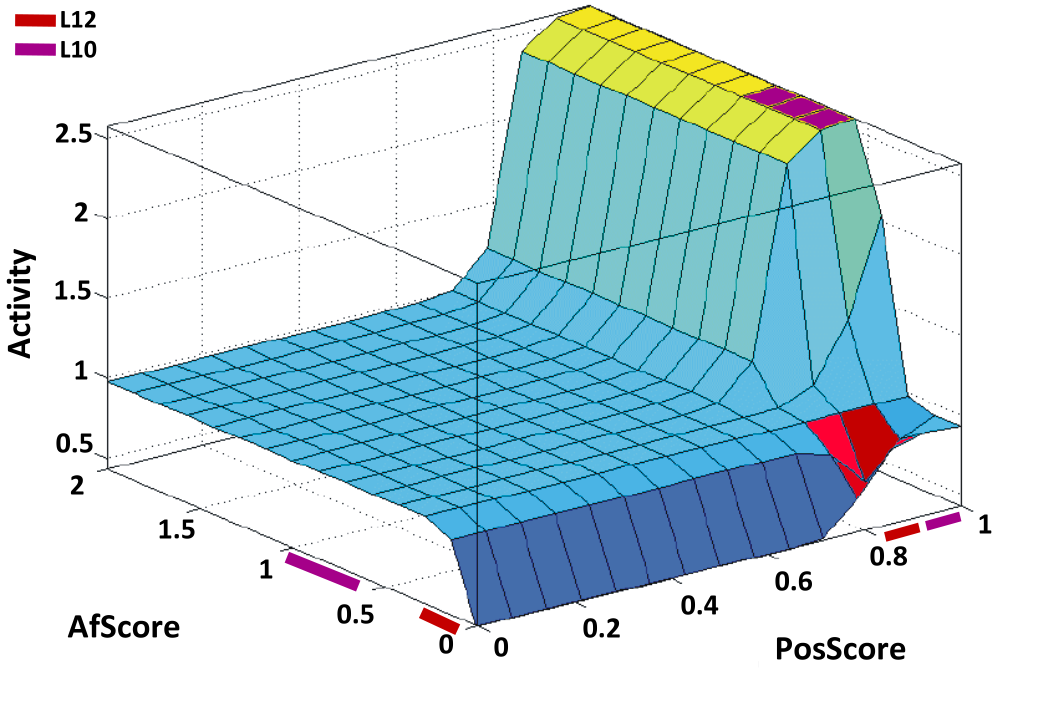Team:Heidelberg/HEARTBEAT network/Results
From 2009.igem.org
HEARTBEAT Fuzzy ModelingResultsModeling inducible promotersBased on prior data analysis of data derived from flow cytometry experiments using inducible synthetic NFkB responsive promoters we developed a fuzzy controller which reflects the behavior of inducible promoters. By using our model we were able to capture the basic behaviour of an inducible promoter (Fig.1). Once this was accomplished, we aimed for capturing the dependency of the activity of the promoter on more heterogeneous parameters, such as affinity score, position score and presence stimulation (Figs. 2a and 2b). As expected, promoter activity was observed only in the presence of a defined stimulation. Obviously, the affinity score produces a more dynamic, steep gradient in a certain range whereas the position score changes the promoter activity only slightly. Finally, we tested the combinatorial dependency of promoter activity on both position and affinity for an inducible promoter upon stimulation (Fig. 3). According to our result, an optimal promoter activity is obtained only in case the promoter sequence harbours a high position as well as a high affinity score. As obtained above, a high affinity score raises the promoter activity to a certain level (and therefore can be considered as a more crucial parameter). A shift towards a high position score, however, is still needed to reach an maximal promoter activation. Our final model of an inducible promoters (Figure: NFkB 1...which figure?) shows the relationship between stimuli, type of promoter, i.e. inducible, affinity score and position score. The model predicted a high dependency of the promoter activity on affinity score revealing its crucial role in TF binding and transcriptional activation. In addition, a certain level of the position score is required for the promoter sequence to augment its promoter activity and reach the maximum, thereby becoming an optimal inducible promoter Importantly, our model captures the behaviour of an inducible promoter. We next targeted another type of promoters. We wondered whether we would be able to establish the same functional model for an non-inducible promoter (constitutively active, short: constitutive). [TOP] Modeling constitutively active promotersfrom here: constitutives
point out: different promoter design, different experimental measuerment, as well as literature data -> final model? and then jump to final model.
|
 "
"



